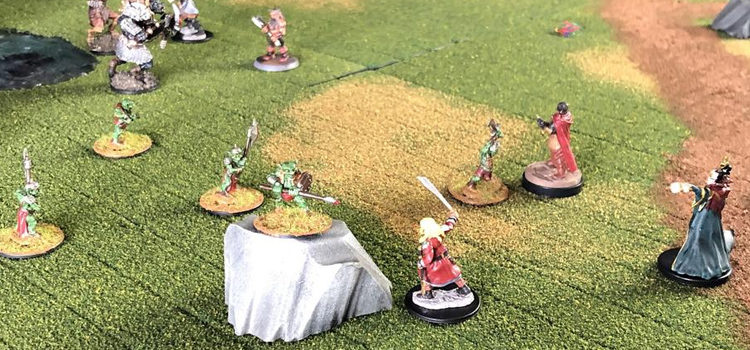What is a Proficiency Bonus in D&D 5e?
This post may contain affiliate links. If you buy something we may get a small commission at no extra cost to you. (Learn more).
In Dungeons and Dragons 5e, a proficiency bonus is a number added to certain actions your character takes. It’s defined by your character’s class, almost like a “built-in bonus” for things that your character is very good at (ie. actions they’re proficient in).
Every character has certain skills, saving throws, weapons, and abilities where they’ve gained proficiency by training and through virtue of their background.
When making a d20 roll using these abilities, each character gains a special bonus which is called their proficiency bonus. This is a number that’s shown in the class table of D&D sourcebooks for each and every class.
A Proficiency bonus is based on a character’s total level, not their class levels.
For example, every character that reaches level 5 total receives an increase in their proficiency bonus from +2 to +3, regardless of whether they multiclassed.
The proficiency bonus is added to a number of different types of checks, but only if the character has proficiency in the right skill or ability. These checks include:
(a) Weapon attack rolls
(b) Spell attack rolls (for casters)
(c) Spell save DCs (for casters)
(d) Saving throws
(e) Skill checks (technically this is a type of ability check)
(f) Tool use checks (this is also a type of ability check)
It’s common for 5e to base other abilities on a character’s proficiency bonus, too.
For example, a Battle Master Fighter’s Maneuver Save DC is based partly on their proficiency bonus, while a Phantom Rogue has certain abilities that they can use a number of times per day equal to their proficiency bonus.
Note: a character does not gain a proficiency bonus to their AC when using armor or shields that they’re proficient with, although there are downsides to using armor and shields if you’re not proficient. Such as a slower movement speed or the inability to cast spells.
Also, per the Player’s Handbook:
“Your proficiency bonus can’t be added to a single die roll or other number more than once. For example, if two different rules say you can add your proficiency bonus to a Wisdom saving throw, you nevertheless add the bonus only once when you make the save.”
For example, take Morgana: a Level 1 wizard.
She’s proficient in daggers, darts, slings, quarterstaffs, and light crossbows, with +2 proficiency bonus.
Her strength is 10 (+0), dexterity is 16 (+3) and Int is 16 (+3).
– Morgana can attack with a dagger using dexterity, since it is a finesse weapon, for a total of +5 to hit (+3 for Dex modifier, +2 for proficiency), with damage of d4+3 (note, proficiency bonus is not added to damage).
– Similarly, Morgana could use a light crossbow for +5 to hit, with d8+3 damage.
– If she attacks with the quarterstaff, she needs to use strength (+0), but she can still add her proficiency bonus, for a total of +2 to attack. The damage is d6, or d8 if she takes advantage of the versatile property.
– Morgana could use a rapier, which also has finesse property, even though she is not proficient with a rapier and cannot add her proficiency bonus to the attack roll. She has a +3 to hit from her dexterity and does d8+3 damage.
– In theory, Morgana could fight with a Great Sword. But since she has a low strength (+0) and is not proficient in the great sword, her attack roll bonus would be +0 and her damage would be 2d6.
– Morgana could also attack using a cantrip like fire bolt, which would have +5 to hit (Int modifier + proficiency bonus) and do d10 damage.
– Or she could cast Toll the Dead, which has a Spell Save DC of 13 for her target (8 + int modifier + proficiency bonus).






